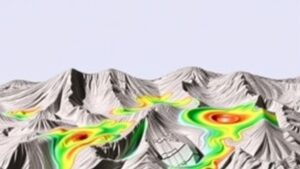Techniques for Processing Mineral-Rich Black Sands Without Chemicals
Techniques for Processing Mineral-Rich Black Sands Without Chemicals
Black sands, commonly found in coastal regions or riverbeds, are rich in heavy minerals including gold, zircon, and magnetite. Traditional approaches to processing these sands often involve chemical methods that can be harmful to the environment. This article explores various techniques for processing mineral-rich black sands without resorting to chemicals, providing sustainable and effective alternatives for mineral recovery.
Understanding Black Sands
Black sands are typically made up of fine particles and are characterized by their dark color, primarily due to the presence of magnetite and other iron-rich minerals. can contain valuable materials such as:
- Gold
- Zircon
- Ilmenite
- Rutile
Processing these sands effectively can yield significant economic benefits without environmental damage, aligning with eco-friendly mining practices.
Mechanical Separation Techniques
Mechanical separation techniques leverage physical properties of the minerals. Common methods include gravity separation and magnetic separation.
Gravity Separation
Gravity separation exploits differences in density between the black sand minerals. This can be accomplished through methods such as:
- Shaking tables: These tables operate on the principle of stratification, where heavier minerals settle while lighter materials are washed away.
- Jigging: In this method, pulsating water creates a moving column in which heavier materials, like gold, drop to the bottom while lighter particles remain suspended.
In practice, operations in Oregon have utilized shaking tables effectively, producing consistent recovery rates of over 90% for gold from black sands.
Magnetic Separation
This technique involves using magnets to extract iron-rich minerals like magnetite from black sands. For example:
- Drum magnets or magnetic separators can efficiently isolate magnetite, allowing operators to focus on extracting other valuable minerals afterward.
The use of magnetic separation has been widely documented in regions like Alaska, where operators report recovery efficiencies reaching up to 95% for iron-containing minerals.
Advanced Techniques: Air Classification
Air classification employs airflow to sort particles based on size and density. This technique is particularly useful for separating lighter materials from heavier ones without the need for water or chemicals. Key points include:
- Utilizing a cyclone or air separator can help in segregating fine gold from black sands effectively.
- By adjusting airflow, operators can classify minerals more precisely, enhancing recovery rates.
This method has shown to be effective in dry mining operations, where water usage is minimized, such as in parts of the Southwestern United States.
Utilizing Gravity Concentrators
Gravity concentrators such as spiral concentrators and sluices are instrumental in improving recovery rates of valuable minerals from black sands. e devices work on the principle of enhancing the gravitational force to separate heavier particles from lighter ones.
- Spiral concentrators utilize a helical structure that allows denser materials to spiral outward and get collected separately.
- Sluices use a series of riffles to trap heavier particles while allowing lighter sands to wash away.
In practice, sluicing operations in California have reported increased gold recovery rates through effective use of these techniques, with efficiencies often exceeding 85% in the right conditions.
Environmental Considerations
Processing black sands using mechanical and physical methods poses fewer environmental risks compared to chemical methods. But, considerations include:
- Minimizing disturbance to natural ecosystems during the extraction process.
- Useing proper waste management to avoid secondary pollution from leftover materials.
For example, operations in New Zealand emphasize restoring mined areas through native plant reintroduction to restore ecological balance after mining has concluded.
Real-World Applications
Numerous artisanal and small-scale miners have adopted these non-chemical methods globally, leading to both economic benefits and environmental preservation. Case studies from regions like Indonesia have showcased miners employing gravity and magnetic separation techniques with improved yields and reduced environmental footprints.
Conclusion
Processing mineral-rich black sands without chemicals is not only feasible but sustainable. By utilizing mechanical separation techniques, air classification, and gravity concentrators, miners can achieve high recovery rates while preserving the environment. As the demand for eco-friendly practices grows, these methods present valuable, actionable solutions for miners looking to optimize their operations responsibly.



